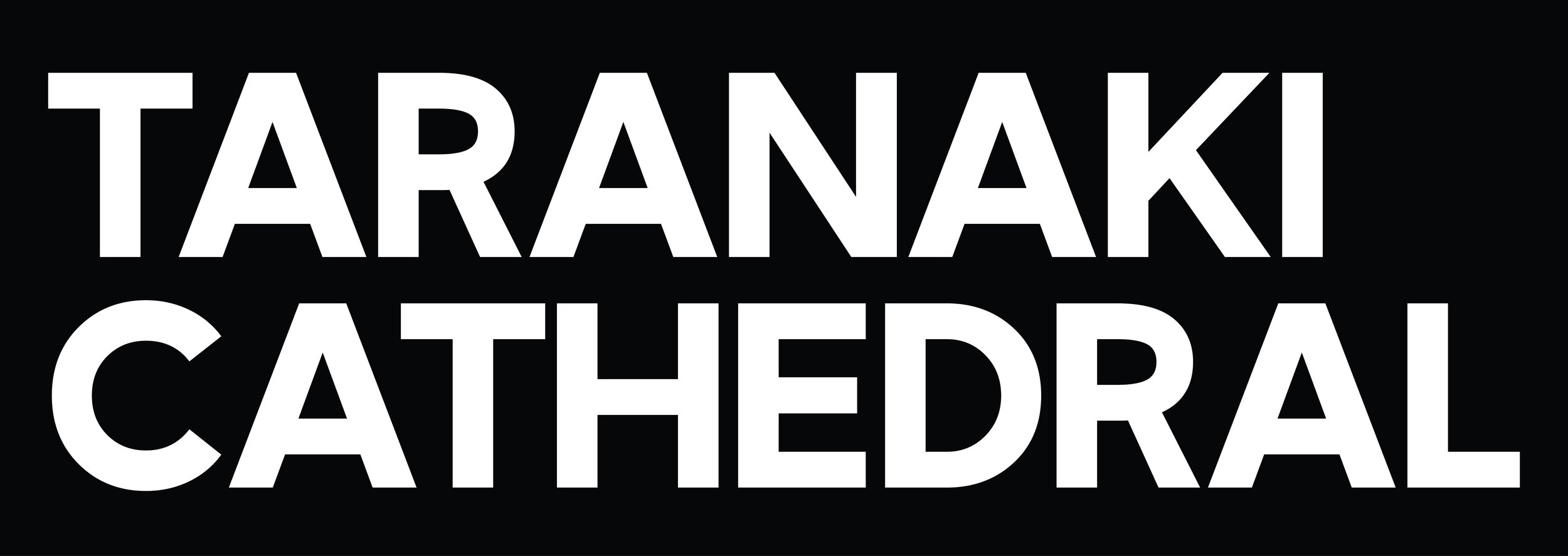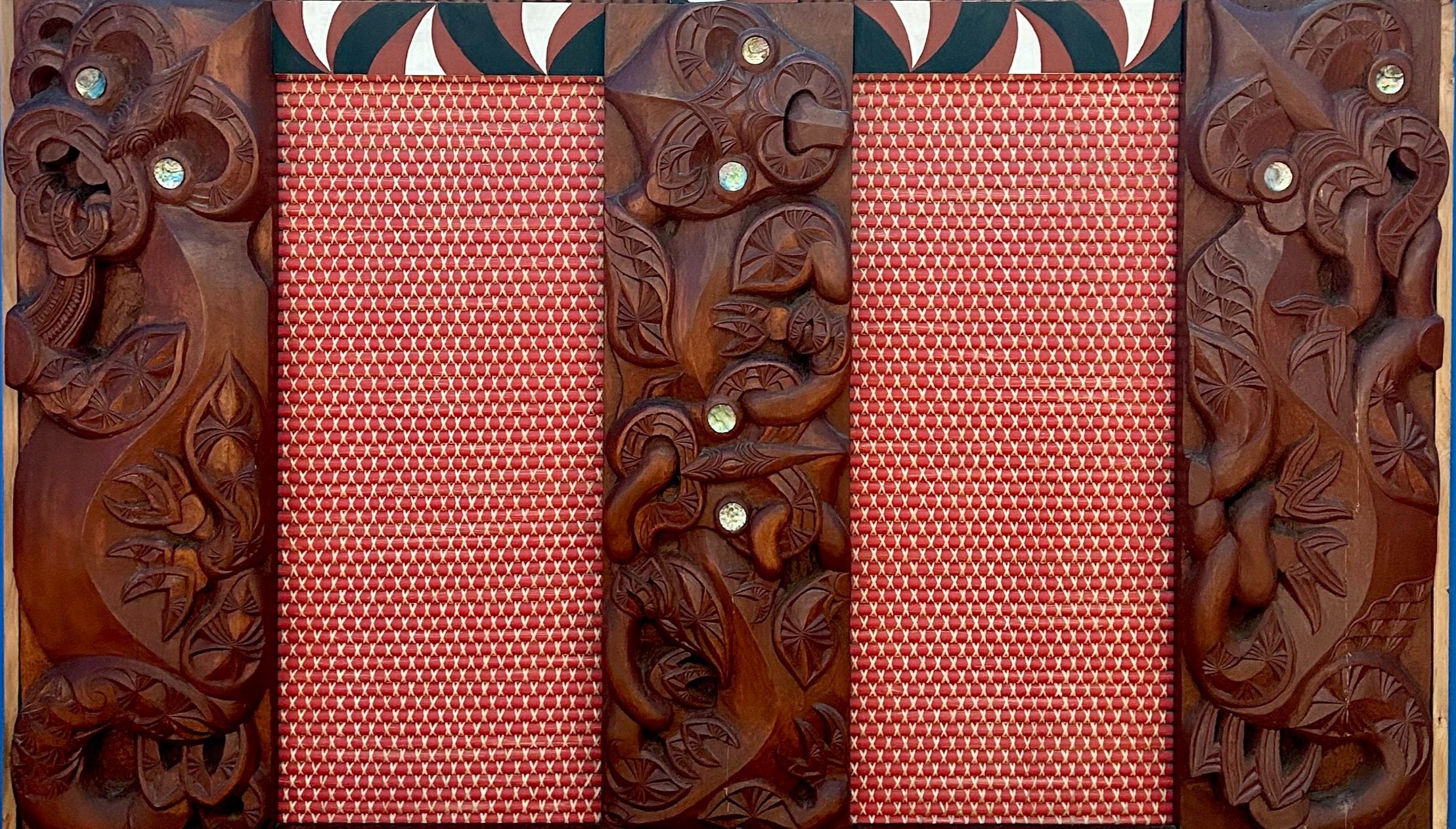KIA AROHA CARVING
KIA AROHA KOUTOU TĒTAHI KI TĒTAHI
- LOVE ONE ANOTHER
TO THE GLORY OF GOD and in memory of the Māori people of Taranaki who died during the conflicts of 1860-70.
On the 24th of September 1972, a carved Memorial was unveiled and dedicated at St. Mary’s. This is a permanent reminder that the wars of the 1860s were by no means one-sided and that in love Māori and European people of the land could be one. The establishment of this memorial as a symbol of peace was an idea that grew from a conversation between the Bishop of Aotearoa, Manuhuia Bennett, and Archdeacon Peter Butt.
The carving was conceived and executed by John Bevan Ford with donated heart totara timber. The tukutuku work was done by the ladies of St Mary’s, instructed by Mrs. M. Crawford. The cost was borne by several local families, some of whose forebears played a prominent role in the early history of New Zealand.
The carved figures tell of two warring tribes which were reconciled through the love of two young people. By mutual acceptance of the God of Love, the two peoples, Māori and Pākehā, can live together in common respect and peace.
The figure on the left depicts the chief Rangi-apiti-rua of Ngāti Awa. The figure on the right is the chief Rangi-rā-runga of Taranaki Iwi. Standing together in the central pillar and Takarangi and Raumahora, who brought peace to their tribes through their union.
The "purapura whetu" (myrlad of stars) within the tukutuku panels demonstrate the numerical strength and spiritual awareness of the people of both areas
The "kowhaiwhai" paintings rising from each panel contain spiritual elements and characteristics of the ancestors representing:
- The stately strength of Te Rangi-ra-runga
- The uncoiling of the lovers’ closeness reaching up to their ancestors and down to their descendants
- The waves of the sea of Kupa that beat upon Rangi-rā-runga at Whakarewa
The upper pattern symbolises the sacred mountain, Taranaki, given a modern significance by the cross depicted within it.
The lower carving supports the whole concept, representing Tokomaru and Kurahaupo, the waka of the Ngāti Awa and Taranaki.
“Friends! much greater is Takarangi's desire for Rau-mahora than for fighting.’… Hence ended the fighting, and the taua returned to their homes at Puke-ariki and Pu-kaka, and never returned again in anger; for a permanent peace was thus made by the union of Rau-mahora and Takarangi.” *






